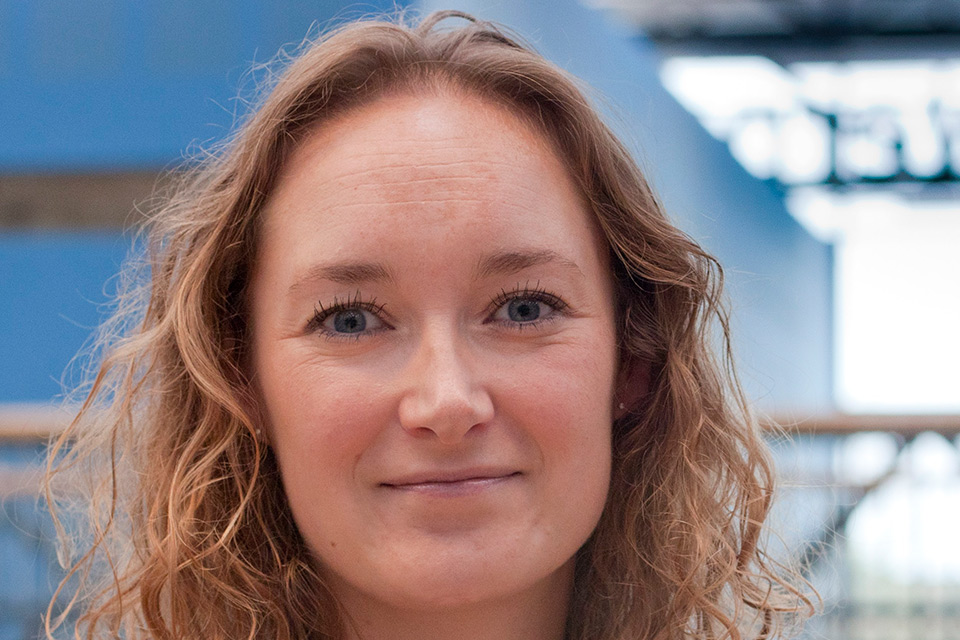
A design-thinking problem needs a design-thinking solution
Senior Lecturer for Marketing Business Design Project, Dr Janneke Blijlevens, used a design thinking, problem-first approach to solve the problem of how to incorporate design thinking into her marketing course.
She is also passionate about getting students to create their own course content to scaffold learning.
Highlights:
- Reframing the question from just ‘how do we teach design thinking?’ to the broader question of what do marketing students need to be job ready led Janneke to an innovative teaching approach.
- The need for marketers and designers to understand each other, rather than marketing students becoming design thinkers themselves, was key for successful collaboration and innovation.
- Using entrepreneurs from RMIT’s Activator program means students see their work applied in real-world contexts.
- An activity-based learning approach can encourage students to develop the content of the course as well as facilitate peer learning.
Why did you need to take a different approach to teaching design thinking when it comes to marketing students?
We are trying to prepare these students for a future in marketing where they will be working together with designers in interdisciplinary innovation teams. Often innovation is stalled because designers and marketers don’t understand each other. Instead of trying to get these marketers to become design thinkers, we need to teach them to understand what designers do, how they think, and how that complements what marketers do. Instead of thinking ‘how do we teach design thinking?’ it’s about what do students really need? What do these graduates need when they go into the workforce?
What led you to wanting students to understand design thinking rather than learn it?
The need for marketers and designers to collaborate better was resounding in the literature around what is needed to get students future ready. You need designers and their understanding of what people need (not just what they say they want) but we are also working in business so we need viability and feasibility. It is a kind of bridge you need to form. Without that, you have an amazing idea that then doesn’t come to fruition. And customers feel misunderstood and don’t feel their needs are being met. The really good design schools actually teach business practice as well. They understand that you can’t do both but you do need to understand the other side because you’re not operating in a vacuum.
What is your approach to teaching your students?
Activity-based learning is a pedagogy that I completely completely believe in. I make sure they do one activity per class. I link the design thinking phases to the critical thinking phases (the thinking style that marketing students are familiar with) so students know what we are doing in each phase, and the activities really brings out that intuitive, divergent, broad thinking that designers do. They get to really experience that throughout each phase but in a scaffolded way.
In feedback from alumni, they’ve said that this style of activity-based learning is what helped prepare them for their future in marketing and working with designers to come up with solutions.
What is the value in work integrated learning and industry partnerships for you and your course?
Each semester I have an industry partner (generally socially impactful entrepreneurs from the RMIT Activator program) give students a marketing problem that students then solve using design thinking.
These entrepreneurs want to start a positive business for the world, but they just don't know marketing very well and the students love it because they can really see these ideas being picked up and used. This is the moment my students realise ‘Oh, this really does work. This way of thinking does bring value’. It shows students the value of real-world design thinking in a real-world marketing problem.
Also by working in groups, they help and learn from their peers, which helps them consolidate their learning for their personal projects as well. They can then apply it to a new context and work with other people so these learnings get intensified by multiple modes of learning.
How do you get students involved in their own learning?
In my course, I design the activities and students design the content. Students are not just sitting there absorbing information. The content evolves as they complete the activities. I provide guidance but it is through their own discovery that they learn. In the classroom, I want students to observe what happens and develop their practice as they go. You can tell them what you're trying to achieve and get them involved in their own learning that way. Ultimately, it's taking them seriously as educated human beings and making them involved in the learning process. And they can. If you give them the tools and the guidance, they can design the course for you.

Janneke discusses her educational framework and research in her article Educating Marketing Students to Understand Designers’ Thought-Worlds.
You can also follow her on LinkedIn.
Looking to bring real world industry challenge into the classroom? RMIT’s Activator program can help you collaborate with our startups. Email the Activator team at Hello.activator@rmit.edu.au or visit the RMIT Activator page for more details.
What is design thinking?
Design thinking is a creative, team-based problem-solving process. It takes a user-centered approach that is based on understanding users, redefining problems and creating innovative solutions and prototypes using the stages empathise, define, ideate, prototype and test.
Story by: Kelsie Kruse


Acknowledgement of Country
RMIT University acknowledges the people of the Woi wurrung and Boon wurrung language groups of the eastern Kulin Nation on whose unceded lands we conduct the business of the University. RMIT University respectfully acknowledges their Ancestors and Elders, past and present. RMIT also acknowledges the Traditional Custodians and their Ancestors of the lands and waters across Australia where we conduct our business - Artwork 'Sentient' by Hollie Johnson, Gunaikurnai and Monero Ngarigo.
More information